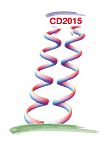Speaker
Manuel Pavon Valderrama
(IPN Orsay)
Description
Effective field theories are generic descriptions of low-energy phenomena for which a fundamental theory is unknown or impractical to solve. The formulation of EFTs is grounded on symmetries and power counting. While symmetries provide the connection with the underlying theory, power counting -- how to order the effective interactions from more to less relevant -- makes EFTs predictive and systematic. However power counting is in general not trivial. For systems that are perturbative at low energies one can establish the counting using naive dimensional analysis (NDA), which states that the dimensionful couplings of EFT scale as powers of M. But when low energy physics is non-perturbative, the choice of a counting that is theoretically consistent and phenomenologically acceptable is a much more involved task. For nuclear physics, which is non-perturbative (e.g. the deuteron), NDA fails. Yet we know now how to organize the counting, though until recently only in the two-body sector.
In this contribution we explain how to extend power counting to reactions involving an external probe -- such as a photon, electron or neutrino -- and two nucleons. We use renormalization group analysis (RGA) as the tool to determine the size of nuclear two-body currents. The findings we made are compatible with well-known observations in the previous literature, for instance, the necessity of a two-body current in radiative neutron capture or that deuteron form factors can be explained to good accuracy without contact two-body currents. In the pionless case we find that there arr important departures from NDA in a few reactions, particularly those involving the 1S_0 singlet channel, indicating that many previous EFT calculations could be improved by taking these changes in consideration.
Primary author
Manuel Pavon Valderrama
(IPN Orsay)

